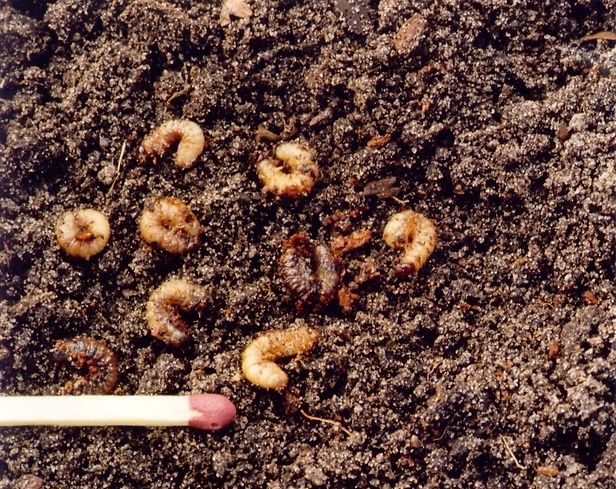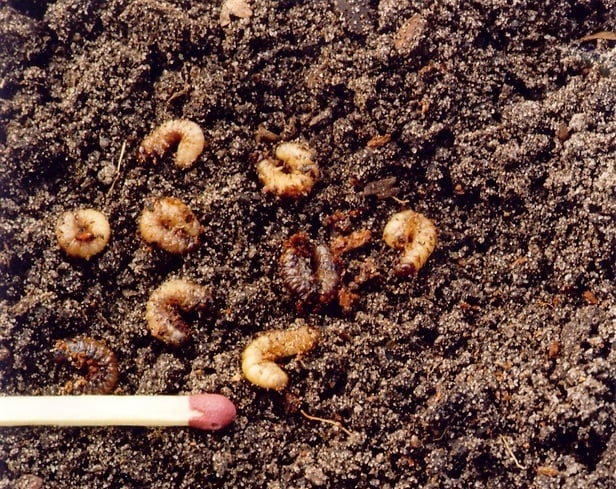
Homeowners are often unaware that white grubs are present until they suffer significant turf loss from secondary pests - animals who feed on the grubs and cause damage. The key to success is identifying if they are present before any turf damage is visible. Monitoring early and often is best practice. If white grub infestations are suspected in a specific area or have been a problem in the past, it is recommended to monitor these areas first. If grubs have not been a problem in the past it is best practice to monitor several random areas across the lawn in the front and back.
Monitor Early
Monitoring for white grubs can be done anytime the grubs (with a one year life cycle) are close to the surface. They are actively feeding on the roots during this period and are easily visible. To do this, the soil located just below the thatch interface must be examined. The most ideal time to do this is during August and early September. The white grub eggs will have hatched and very young early 1st instar larvae will be present.
Turf Rollback Test
The easiest way to monitor for grubs is to examine the top portion of the soil just under the thatch interface. A sod knife can be used to cut back the turf. A good method for detecting white grubs is to cut 3 sides of a square in the turf about 12 inches and gently pull and roll back the turf. Examine the soil by breaking it apart and count the white grubs to get an accurate number per square foot.
Threshold Limits
A number of variables can influence the severity of damage from white grubs. Well maintained, irrigated and healthy turf can generally withstand a higher population of white grubs before damage becomes a problem. 5 to 10 white grubs per square foot is generally considered the threshold for curative treatment. White grub populations less than this should be monitored closely until a control decision is required.






